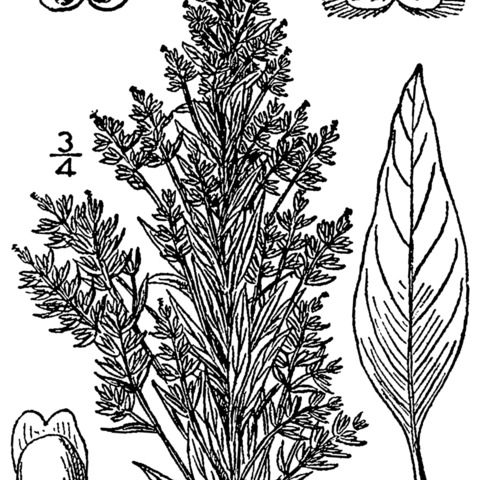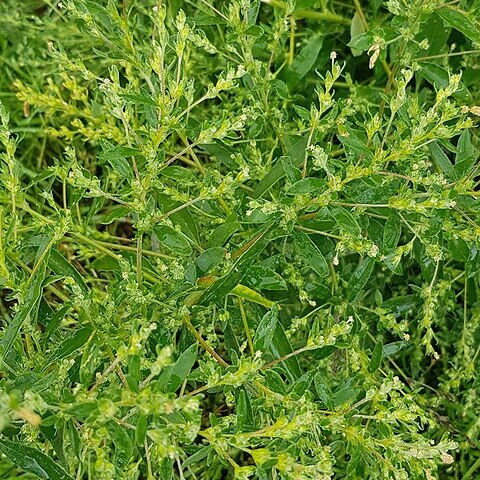An annual herb. It grows 20-80 cm high. The stems are erect and stout. Both male and female flowers are on the same plant. The stems are upright and 20-80 cm tall. The lower leaves have short leaf stalks. They are oval to pointed. The upper leaves are rounded oval shape with leaf stalks. There are teeth along the edge. The male flowers are in narrow spikes at the top and there are one or two female flowers in the leaf axils below the male flowers. The fruit are oval, red and dry.
Erect, 2–8 dm, with numerous short, ascending branches; lvs short-petioled, lanceolate, stellate-hairy beneath, to 8 cm, progressively reduced above; pistillate panicles commonly on long, naked peduncles; bracts of the pistillate fls in 3’s, the middle one the largest; pistillate cal 2 mm, stellate-hairy; staminate spikes 2–10 mm, the fls minute; fr brown, 2–3 mm; 2n=18. Native of Siberia, becoming a weed in our range, especially northward.
Stems (5-)30-90 cm. Leaf blades pale green, (1-)1.5-3 × 5-9(-10) cm. Flowers: perianth segments 3-parted, oblong to oval, apex obtuse, whitish pubescent, with both stellate and simple trichomes adaxially; staminate whitish, less than 2 mm, stamens 3; pistillate green. Utricles red or dark brown, heteromorphic, obovate or oval, 2.5-3 mm, with distal 2-lobed appendage. 2n = 18.


